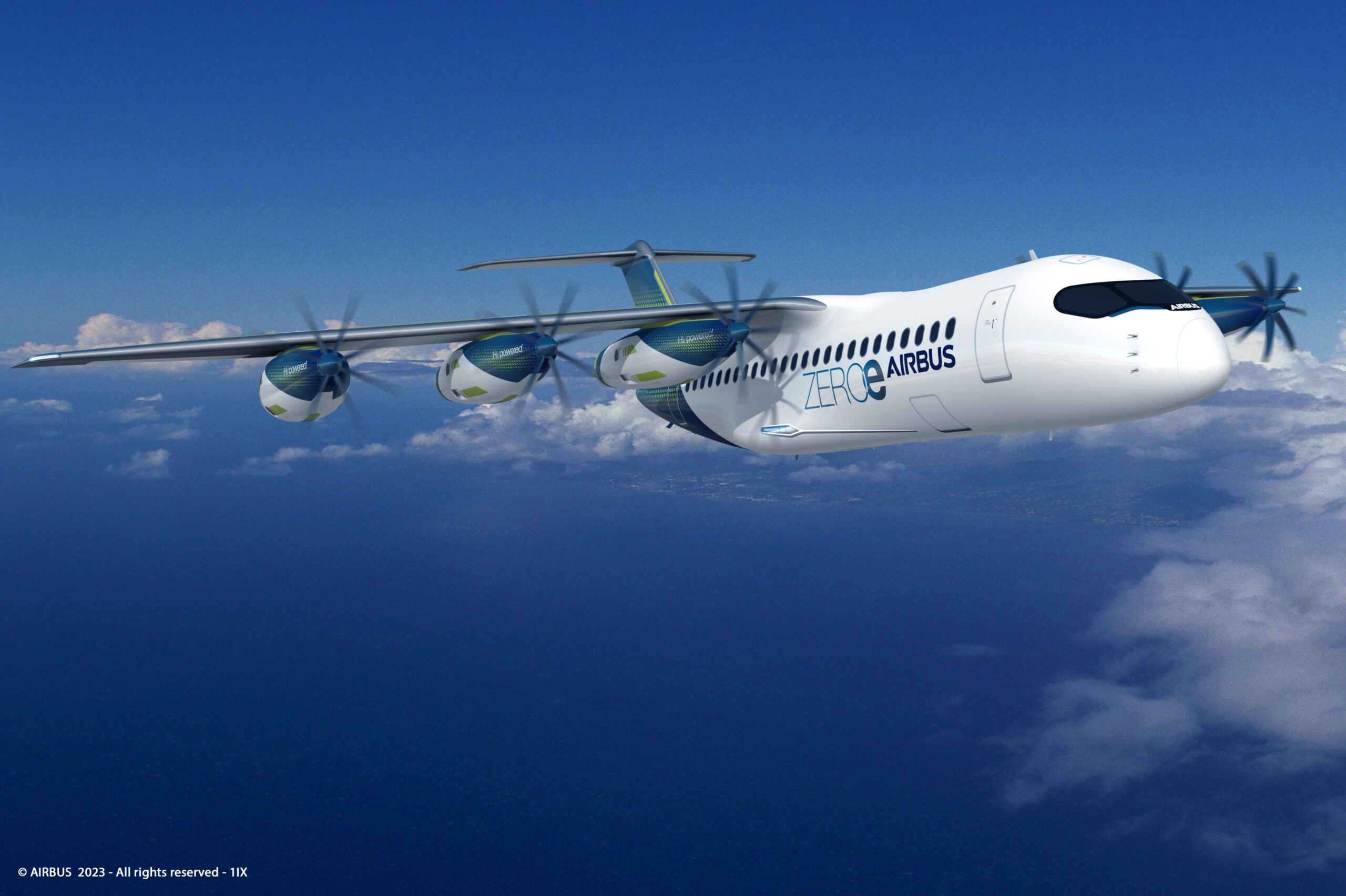
Airbus ZEROe 6 pods concept plane scaled
Airbus has reached a major milestone in testing the hydrogen fuel-cell system in the dedicated test facility in Ottobrunn (Germany). The system has operated at full power and produced 1.2 megawatts of power, which is the highest output level ever produced on a system for aviation, Chief Technical Officer Sabine Klauke said earlier this week during the Paris Airshow. Airbus’s hydrogen system reaches required power output.
Vice President of the Airbus ZEROe hydrogen project, Glenn Llewellyn, explained that the 1.2 MW is exactly the required power output for each of the six electric engines that are on the 100-seater turboprop concept of the ZEROe that was unveiled in September 2020. Back then, it had just two engines but now there are six (main picture). The system is capable of taking off a large commercial aircraft and cruising at Mach 0.5.
“We are in 2023, but it is a major step on our flight demonstration roadmap which takes us on to the 2026-2028 window we shared previously,” said Llewellyn. Airbus said before that in this window, all hydrogen technologies should have matured to make a decision on the configuration of the first ZEROe airliner. The plan is still to have this aircraft available for commercial service around 2035.
The fuel cell engine system, which AirInsight saw during a visit to Ottobrunn in December, has fully simulated all phases of flight as well as various failure scenarios. Whereas the test facility takes up the space of a room, the hydrogen system has to be shrunk to fit a compact engine that will be tested on the A380 flying testbed.
Plenty of challenges
“We still have lots of work to do and there are plenty of challenges, but I think the prize of being able to fly an aircraft with zero CO2 and maybe even close to zero climate impact is a massive prize at the end. One that we believe is worth continuing to significantly invest in,” said Llewellyn.
The major challenges he sees are achieving the mass and weight targets for the engine, efficiency targets for the fuel cell stacks, and the operating temperature targets. “The fuel cell stacks are in the heart of the engine and influence a lot the thermal management system that we need to put into this engine. But there is also drive on basically every single component of that system: the electric motors, the gearbox, the motor control units, compressors, and humidifiers. Every single component has a target.”
This also includes electronics. Airbus announced a partnership with ST Microelectronics to develop advanced power semiconductors that will be included in the fuel cell engine, using silicon carbide and gallium nitride. Demonstrators using these semiconductors will be tested.
Hydrogen APU
Airbus also wants to introduce hydrogen as the fuel for the aircraft’s auxiliary power unit (APU) for non-propulsion systems. An APU requires some five percent of all the energy of an aircraft. This five percent of kerosine and emissions can be replaced by hydrogen, said Sabine Klauke.
That’s why Airbus UpNext in Spain will develop a hydrogen APU demonstrator called HyPower that will be tested on an A330 by the end of 2025. After converting the aircraft, extensive ground tests are planned in 2024. UpNext CEO Michael Augello said that the system will be tested during one-hour sorties of up to 25.000 feet, using ten kilograms of gaseous hydrogen.
Hydrogen combustion
In another update, Llewellyn said that on May 12, ArianeGroup successfully completed the proof of concept of a hydrogen conditioning system that is adapted to power a gas turbine engine for use on an aircraft. “This first experiment of the project called Hyperion was made possible by re-using equipment designed for space applications and adapting them for commercial aviation. This has been an essential building block for the hydrogen combustion technology roadmap up to 2035.” Airbus and ArianeGroup will launch another joint project in the near future.
Progress has also been made on the preparations for the hydrogen demonstrator engine with GE Aerospace and Safran. For this, a converted GE Passport engine will be mounted on an A380 testbed, as Airbus already announced in early 2022. The program is now halfway through the concept phase of the flight demonstration activities. The design architecture will be frozen in the very short term, Llewellyn said.
Views: 17




